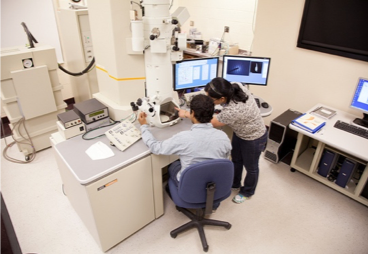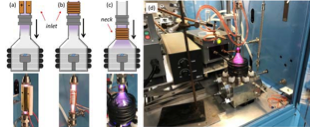Phil Ahrenkiel — NanoScience and NanoEngineering
Dr. Ahrenkiel manages the campus TEM facility, an MOCVD semiconductor growth facility, single crystal x-ray diffractometer laboratory and (cryo) microtome, ion mill and lapping laboratory for microscopy sample preparation. Equipment and facilities are listed below:
TEM lab
Transmission electron microscopy (TEM): The TEM laboratory is equipped with the JEM-2100 LaB6 high resolution transmission electron microscope (HRTEM) that enables imaging on the sub-nanometer length scale and is equipped for a broad range of analytical characterization, including both scanning TEM and secondary-/backscattered-electron imaging. An 80-mm2 Oxford silicon drift detector is integrated with the scanning unit for energy-dispersive X-ray spectrometry (EDX) and EDX mapping. A bottom-mount Gatan Orius CCD camera provides for digital imaging and diffraction. A high-tilt specimen retainer can be used for tilt-series tomography at angles of up to ±80°. The SerialEM software can acquire tomographic tilt series in either TEM or STEM mode.

Microtome lab
Microtome and Cryo-microtome laboratory: A 120 sq. ft. dedicated room equipped with a 4x8 optical table, balance, dimpler, polishing wheels, ion mill, and microtome for embedding samples and thin sectioning for TEM analysis. Special equipment for handling of biological samples includes freeze dryer for lypholization; accessories for cryo-ultramicrotome (LN2 pump, reservoir, and diamond knives); Cryo-TEM holder, and Cryo-holder transfer system.
MOCVD lab
PE-MOCVD system: Metalorganic chemical vapor deposition system (custom built) with 10-port manifold (Swann). Current sources include: trimethygallium, trimethylindium, trimethylaluminum, arsine, phosphine, trimethylzinc, diethyldiselenide. A complete EH&S assessment was performed by an independent contractor in 2008 to ensure compliance with all applicable regulations. Appropriate safeguards were installed, including interlocked toxic-gas monitoring system and high-flow ventilation.
